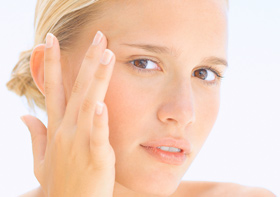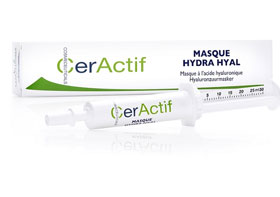Guide to Adult Acne

Acne is one of the most common skin conditions in the world. Although it usually occurs in teenagers more than 60% of acne sufferers develop the condition later in life.
Some of the causes of acne vulgaris in later life are stress, genetics, hormonal changes, air pollution, intolerances & misuse of products to name but a few! Its estimated to affect over 600 million people globally, making it one of the most common skin concerns worldwide. Nearly 80% of people between the ages of 11-30 suffer from some form of acne.
Although a person's symptoms usually disappear during their mid-twenties, adult acne is very common. It can be either a continuation of teenage acne or can begin for the first time in adulthood – this is known as “adult-onset acne”. While most people continue to get the odd spot (or mild acne) well into their 30s, severe adult acne is believed to affect around 5 per cent of women and 1 per cent of men over the age of 25.
Though it can affect almost any part of the body, generally the areas with the highest number of oil glands are more likely to show acne blemishes - this includes the face, back and chest. Most sufferers will present signs of facial acne, with more than half also experience some degree of back acne. Chest acne is less common affecting around 15 per cent of sufferers.
If you are unsure whether you should speak to a Dermatologist about your skin, you can find answers to some common acne questions below. However, if you notice any signs of severe acne, or have any serious concerns, you should consult a skin care specialist immediately to prevent persistent symptoms and later scarring of the skin.
What are the main causes of Acne?
This can be one of the hardest questions to answer as acne is caused by many factors. Quite simply acne vulgaris occurs when the skin produces too much sebum; a natural oil that prevents the skin from drying out. Hair follicles can become clogged when sebum and dead skin cells combine, which then leads to inflammation. This becomes more complicated when looking at the cause of the sebum generation.
There are numerous causes of acne some are short-term, including hormonal changes due to pregnancy or because of medication, and others are more long-term. While short-term acne can affect confidence, people generally understand why they're experiencing it and know their symptoms will reduce when their circumstances change. Long-term acne can have more of a psychological impact as there is no clear end-date to their skin concerns, these include:
Puberty
This is unquestionably the most common time for acne to develop. The sebaceous (oil-producing) glands are most sensitive to testosterone during this time, leading to the production of excess oil in the skin. Hormonal changes during a woman’s menstrual cycle have similar effects on the skin. Acne lesions over the jaw-line and chin usually indicate hormonal acne.
Stress
On-going high levels of stress can cause the body to increase the generation of the hormone ‘cortisol’. Cortisol is a steroid hormone that regulates a wide range of processes throughout the body, including metabolism and the immune response. Overproduction of this hormone can inflame and irritate the skin.
Genetics
The genes we inherit from our parents can dictate whether or not we develop acne symptoms. Thick, oily skin could be part of your genetic makeup, which in turn, could increase your chances of developing acne.
Misuse of Products
Using the wrong skin care products for your skin type or using heavy makeup can aggravate the skin and cause acne by trapping dirt in pores and encourage inflammation. Forgetting to take your makeup off at the end of the day can block pores too, so remember make cleansing your face part of your bedtime routine, even if you're half asleep when you do it!
Polycystic Ovarian Syndrome (PCOS)
Unless you, or a friend, have it there is a strong chance that you don't know what PCOS is. Polycystic Ovarian Syndrome is an incurable hormonal disorder which affects women, usually after the age of 25. Acne develops due to n insensitivity to insulin, which leads to acne marks along the jaw-line, cheeks, chin and upper neck area. Other symptoms include excess hair growth If you think this is the cause of your adult acne.
How to prevent acne
In many cases, acne sufferers exacerbate the severity of their condition by cleaning skin incorrectly. This can irritate skin flora, leading to infection and inflammation of the problem area. In turn they clean their faces more to treat the symptoms thereby making them worse.

Some of the simplest ways to prevent acne are:
- Wash acne-prone skin only twice a day; over-washing may irritate the skin and increase inflammation.
- Use mild soap or acne cleanser, lukewarm water and fragrance-free products.
- Avoid squeezing spots or touching lesions, as you may inadvertently pick up bacteria and scar the skin.
- Choose your makeup carefully - do some research. Oil-based makeup increases oil production in the skin and, in turn, blocks hair follicles, which increases inflammation. Non-comedogenic water-based products such as specialist acne moisturisers from the ClariFort range help with opening the skin and reducing inflammation.
One thing that must be understood is that acne is treatable, not curable. If you find a skin care routine that works for you then stick with it. If you're acne symptoms aren't receding within 6 weeks of your starting your new routine, it takes approximately 6 weeks for new products to take effect, or if your acne symptoms are coming back then you need to review your skin care routine or talk to a skin care professional, such as a Dermatologist for alternative options.
Types of Acne
Depending on symptoms, acne vulgaris is classified as being mild, moderate or severe:
- Mild acne cases tend to have greasy skin on the nose and forehead, which can lead to clogged hair follicles. Acne spots most commonly associated with mild acne include blackheads (caused by open skin follicles which have become clogged, turning brown when exposed to air) and whiteheads (similar to blackheads, but firmer and shouldn’t be squeezed).
- Moderate acne occurs when inflammatory lesions, papules and pustules develop on other areas of the face, resulting in red or yellow spots. Papules (small red bumps which may feel tender) and pustules (similar to papules, but caused by a build-up of pus) are most commonly associated with moderate acne.
- Severe acne occurs when inflammatory nodules (painful bumps under the skin) and cysts (large nodules which hold fluid) extensively cover the face and body. This degree of acne can be extremely painful to touch.
- ‘Severe nodular acne’ or ‘cystic acne’ carries the highest risk of permanent scarring. If you are suffering from severe nodular acne you must seek professional help.
- Acne conglobata is a form of severe acne which usually persists until the person is around 40 years old.
- Acne rosacea shares certain similarities with acne, but is classified as a separate condition. Symptoms of acne rosacea include red flushing skin, which is triggered predominantly by stress, strenuous exercise and caffeine. We would recommend you see our Dermatologist for this condition.
Where to Start?
As mentioned before there is no known acne cure at present, but it can be managed. For mild forms of acne there are several over-the-counter products which can help curb the condition.
Start with a specialist skincare consultation so that you are aware of what category your acne is sitting in and have a personalised plan made for you, including a full product guide that is suitable for your skin, recommendations of treatments that you can incorporate in to help manage the affected areas followed by a dermatologist referral if that is required.
Our dermatologist will prescribe antibiotics for acne if they feel it is necessary. Results can take at least six weeks to show, and some courses last up to six months. If you develop nodules or cysts you will need to visit a medical professional, as these can result in scarring if not treated properly.

Treatments
ClariFort prescriptive facial £30
Salicylic Acid Peel £45
Diode Light Therapy £55
Salt Microdermabrasion £75
Naturepeel Hydrating Facial £95
Naturepeel Indulgence Facial £135
If you're interested in booking a FREE consultation to discuss Acne treatments please call or email us in clinic.


